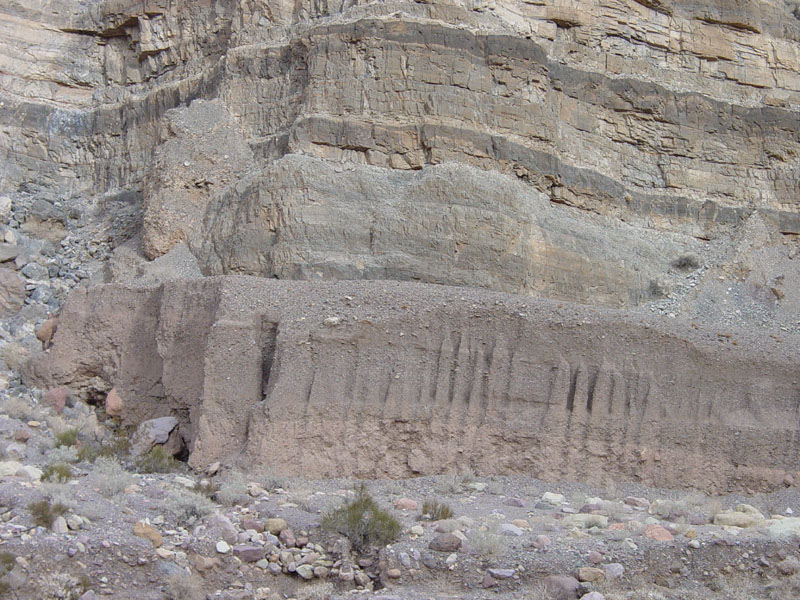
 |
| Exposures of poorly consolidated gravel deposits of late Quaternary age are exposed in many places along the wash bottom of Titus Canyon. In some places these deposits are several dozen meters thick. They reflect periods in the past when climatic conditions or changes in the canyon geometry favored back filling of the canyon with alluvial sediments. Also along the canyon are "collapse breccias," some of which are clearly re-cemented carbonate-rock talus and colluvial deposits of Quaternary age; others are bedrock that had been sheared and fractured by tectonic forces at depth, and then both partially dissolved and re-cemented by groundwater activity. The final product of both processes is a tightly cemented limestone/dolomite breccia. Similar deposits can be seen in Mosaic Canyon. |